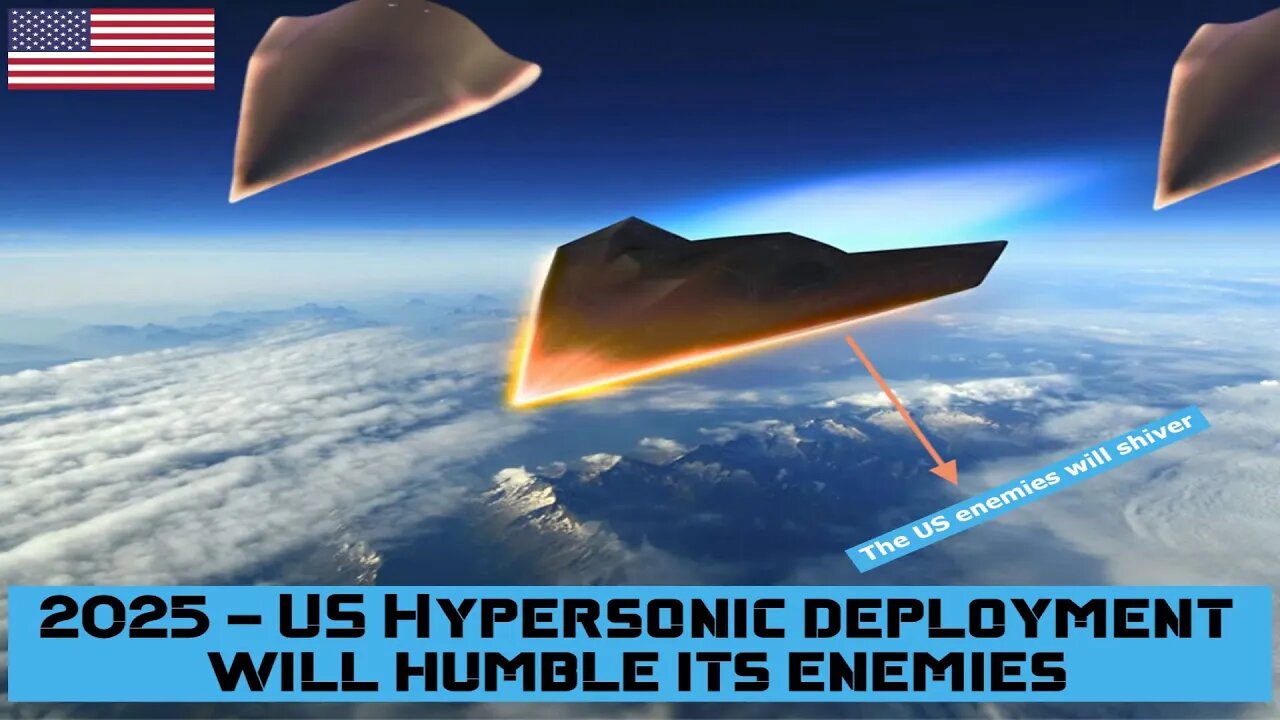Premium Only Content

2025 - US Hypersonic deployment will humble its enemies #hypersonicmissile #usmilitary #usairforce
The head of the U.S. Navy’s Strategic Systems Programs office is confident the service can field hypersonic weapons on a Zumwalt-class destroyer in 2025 and on a Virginia-class submarine in 2029 despite the significant workload that remains.
Vice Adm. Johnny Wolfe said “time is not our friend” as the Navy races to finish hypersonic missile development alongside the Army by 2023. Next up is designing and testing the integration between the missile and USS Zumwalt’s hull and combat system ahead of a 2025 shipyard period where the weapon will be backfit onto the large destroyer. In parallel, engineers must work through the physics of launching the weapon from under the sea ahead of a 2029 fielding on Virginia-class submarines. The Navy had previously said the Virginia-class submarines would field the hypersonic weapon, which the Navy calls Conventional Prompt Strike, in 2028. The new date is due to a delay in the planned delivery of the first submarine that will house the large missile — the future Arizona, the first submarine with the Virginia Payload Module — not a delay in the missile development itself.
On the hypersonic weapon, Wolfe said the Navy and Army are in a good place leading up to the Army’s debut next year. He said he was optimistic about how much the services had learned so quickly, despite two live flight tests over the past year that fell short of their full testing goals.
Wolfe claimed success or failure was in the eye of the beholder: the two services have added stretch goals to each of their missile flight tests, so even when a flight doesn’t meet its full objectives, engineers are still learning much faster than they would under a traditional acquisition and test program. “If we’re going to go fast, and we’re going to deploy a system that, quite frankly, we just decided in 2018 that we were going to put in warfighters’ hands … we’re going to have to lean forward, and we’re going to have to take risk,” he said in remarks at the Naval Submarine League’s annual conference here.
In a June test called Joint Flight Campaign-1, officials wanted to test the new rocket motor booster stack developed by the Navy. The services decided to also integrate the weapon’s glide body, which had already been proven in previous testing, into the setup. Wolfe said the stack worked well and both stages lit off successfully. However, he added, the test weapon did not reach its target due to an unexpected integration issue.
“Within seven weeks of that flight, we had identified what the issue was, we had developed a corrective action, and it is already in the next round that we’re going to fly,” he said.
Lt. Gen. Robert Rasch, who runs the Army’s Rapid Capabilities and Critical Technologies Office, previously told Defense News that “if we would have just declared that all we were going to do was just to shoot up a missile stack, it would have been 100% a success.” Rather, he said, “given the rarity of these events, we always have stretch learning goals,” and that’s where the flight test fell short.
====================================
We appreciate all of our viewers and supporters. Thank you.
====================================
Support us on Patreon: https://www.patreon.com/shieldwalldefense
====================================
Fair use is the right to use a copyrighted work under certain conditions without permission of the copyright owner. The doctrine helps prevent a rigid application of copyright law that would stifle the very creativity the law is designed to foster. It allows one to use and build upon prior works in a manner that does not unfairly deprive prior copyright owners of the right to control and benefit from their works. Together with other features of copyright law like the idea/expression dichotomy discussed above, fair use reconciles the copyright statute with the First Amendment.
====================================
-
 2:12:18
2:12:18
TheDozenPodcast
23 hours agoIslam vs Christianity: Bob of Speakers' Corner
66.2K15 -
 14:36
14:36
The StoneZONE with Roger Stone
1 day agoRoger Stone Delivers Riveting Speech at Turning Point’s AMFEST 2024 | FULL SPEECH
94.4K23 -
 18:59
18:59
Fit'n Fire
13 hours ago $5.89 earnedZenith ZF5 The Best MP5 Clone available
50.8K1 -
 58:34
58:34
Rethinking the Dollar
22 hours agoTrump Faces 'Big Mess' Ahead | RTD News Update
40.8K5 -
 5:35
5:35
Dermatologist Dr. Dustin Portela
22 hours ago $1.95 earnedUnboxing Neutrogena PR Box: Skincare Products and Surprises!
40.5K4 -
 11:20
11:20
China Uncensored
21 hours agoCan the US Exploit a Rift Between China and Russia?
64.2K21 -
 2:08:48
2:08:48
TheSaltyCracker
16 hours agoLefty Grifters Go MAGA ReeEEeE Stream 12-22-24
262K706 -
 1:15:40
1:15:40
Man in America
19 hours agoThe DISTURBING Truth: How Seed Oils, the Vatican, and Procter & Gamble Are Connected w/ Dan Lyons
154K140 -
 6:46:07
6:46:07
Rance's Gaming Corner
21 hours agoTime for some RUMBLE FPS!! Get in here.. w/Fragniac
177K5 -
 1:30:48
1:30:48
Josh Pate's College Football Show
20 hours ago $11.42 earnedCFP Reaction Special | Early Quarterfinal Thoughts | Transfer Portal Intel | Fixing The Playoff
108K1